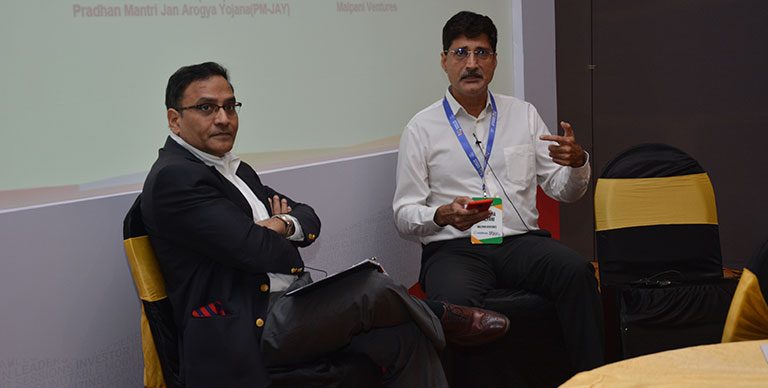5 Reasons Why Investors Can’t Seal the Deal in East Africa
Whilst startup investment in East Africa is at an all-time high, recent reports have shown that 72% of capital went to only three startups in 2015 and 2016. With enterprises citing access to capital as the biggest barrier and funds and investors highlighting lack of investment ready enterprises in East Africa it is essential to dig deeper to understand how to support more deal closures. Following numerous conversations with investors and entrepreneurs from the Intellecap Impact Investing Network (I3N) investment challenges can be summarized as the 5 Cs below:
1.Competition- Investors compete for enterprises that are post revenue but there are not enough post revenue enterprises and many enterprises require early investment to get to that stage
With increasing investor interest in the region, Africa’s private equity market has grown over the last 25 years with over 200 Africa focused funds with more than $30b under management with international investors being the dominant source of funds. Most of these funds are looking at ticket sizes range from $100k – $10m. Intellecap’s Game Changers Report which looked at over 400 enterprises across East Africa showed that entrepreneurship is still nascent and more that 60% of enterprises interviewed were younger than five years old. Around half of these enterprises have not achieved break-even and 67% of these enterprises earn revenues of less than US$100k. As such small ticket size investments are critical for the growth of these enterprises and currently demand for such investments far outstrips supply. Â On the other hand, supply of higher ticket size investment outstrips demand leading to intense competition for the coveted few which have proven product/market fit and are post revenue.
2.Credit- Lack of debt such as working capital and other specialized forms of debt means that businesses cannot grow
High collateral requirements, the inflexible collateral definition and high interest rates mean that most enterprises lack access to credit. Interest rates are in East Africa are stiflingly high, Ugandan rates being the highest averaging 25%, with Tanzania at 21% and Rwanda and 20%. In Kenya, an interest rate capping was introduced, however this has led to a reduction in lending to micro, small and medium enterprises. Whilst fintechs, banks and mobile network operators such as Branch, Tala and Mshwari have stepped in to offer loans without the collateral requirements, interest rates still range from 13-15% depending on the amounts. Many early stage enterprises are unable to service these interest requirements and therefore unable to access working capital required for expansion, productivity and growth. Â Businesses require different forms of capital and end up trying to raise equity to do the things that debt should be used for which raises red flags for investors who are more inclined to reject the deal.
3.Context- Opportunity cost for local investor is too high with traditional investments offering high rates of return meaning that most investment capital is international bringing its own unique challenges
The concept of angel investing is nascent in East Africa with most local investors focusing on more traditional forms of investment such as real estate, stock market. These investments offer high rates of return, with yields from property development, or lending to the government ranging from 6- 12%. Â Additionally, with no comparable African success stories that are common in Silicon Valley the opportunity costs for local angels is too high. The East African landscape is therefore dominated with international capital. This in turn brings its own unique challenges. International funds often lack local context and tend to have small teams with limited bandwidth, decision making occurs internationally resulting in deals taking longer. Investors further miss out on opportunities as they lack on the ground understanding of local problems and solutions for example the fact that pace of business in East Africa is slower here than in US or Europe.
4. Culture- Most capital goes to foreign start-up founders who are more familiar with venture capital and can structure business and vision accordingly
90% of all disclosed investments over the past two years went to startups with one or more European or North American founders. With the majority of capital being international, it is likely that foreign entrepreneurs are better able to understand how venture capital is different from traditional business and thus structure and articulate their vision accordingly. Investors are looking for fast growing, scalable businesses, taking the risk on unique ideas and betting on the founder and team. Whether local entrepreneurs need to articulate and evidence their business according to the criteria identified or investors need to modify their expectations understanding cultural niceties is key to ensure more deal closures.
5. Cost- Deal closure takes longer in East Africa with substantially higher costs
Cost of investing in East Africa is high. The East African ecosystem is rather nascent, especially beyond cities such as Nairobi, Kampala, Kigali. Entrepreneurial skills, start-up infrastructure, government policies, and availability of talent is not as developed. For instance, the average deal closure of an investment in East Africa takes 9-10 months where-as in India it takes 4-6 months. Due diligence, documentation preparation, legal costs are high with entrepreneurs not familiar with the process and unable to understand deal terms and valuation. Further many investors need to fly into East Africa to analyze and monitor various aspects of the investment, which increases the transaction cost. In many cases, external experts need to be hired to fill compliance and regulatory gaps, further adding to the hike in transaction related expenses.
In conclusion, whilst there is a lot of potential in East Africa a lot more work is required to facilitate more deal closures. Most of the conversations are focused on getting entrepreneurs investment ready and whilst this is correct, perhaps capital also needs to be contextualized. This is an emerging market after all and it will be more difficult to find businesses with great teams and models that unique, scalable and revenue generating. Perhaps investors will need to take more risk, bring in more patient capital and add value if they want to seal more deals here.
Breaking the Pattern: Village Capital/BMGF Foundation, 2017 report








